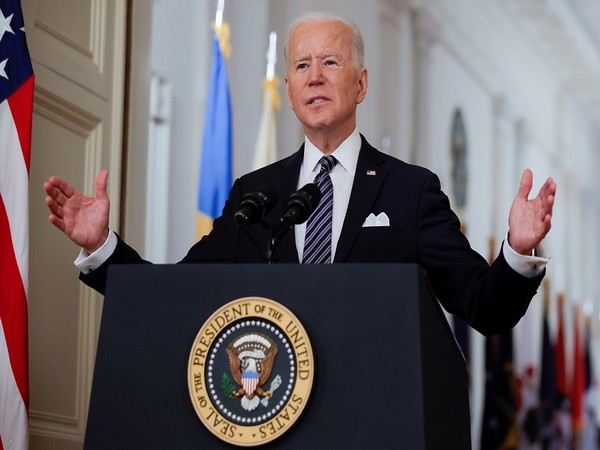Six takeaways from the Biden budget proposal
It increases federal discretionary spending by 8.4% compared to 2021 levels, excluding emergency funding, to $1.52 trillion, with a focus on health, education and climate. The budget allocates a record $20 billion increase to impoverished public schools that are part of the "Title One" program, part of a Biden pledge to address education inequality. * CLIMATE.

Here are six takeaways from U.S. President Joe Biden's proposed federal budget, released on Friday:
* HEADLINE NUMBERS. It increases federal discretionary spending by 8.4% compared to 2021 levels, excluding emergency funding, to $1.52 trillion, with a focus on health, education and climate. About two-thirds of the massive budget is "mandatory" spending for benefits like Social Security and Medicare. * MILITARY AND DEFENSE SPENDING. Making up about half of the U.S. discretionary budget, this would increase by 1.7% to $753 billion. The increase is likely to upset progressives, who pushed for cuts to the never-audited Department of Defense to fuel other policy priorities. Because it is lower than former President Donald Trump's 2022 projections, it may also anger Republican defense hawks pushing for more spending.
* HEALTH AND MEDICAL RESEARCH. The budget includes $8.7 billion in funding for the Centers for Disease Control and Prevention, representing what the White House says is the largest increase in two decades. The CDC has suffered from a decade of declining funding, and the agency's muddled response to the coronavirus pandemic may have contributed to the spread of the disease, Reuters reported https://www.reuters.com/article/us-health-coronavirus-cdc-response-speci/special-report-how-u-s-cdc-missed-chances-to-spot-covids-silent-spread-idUSKBN29R1E7. The budget also allocates $6.5 billion for a new research agency to direct federal funding to diabetes, Alzheimer's and cancer research, and $10.7 billion to research and prevent opioid addiction, representing a nearly $4 billion increase from last year. * IMPOVERISHED SCHOOLS. The budget allocates a record $20 billion increase to impoverished public schools that are part of the "Title One" program, part of a Biden pledge to address education inequality.
* CLIMATE. The proposal includes budget boosts of about 20% for the Environmental Protection Agency and the National Science Foundation over last year's enacted levels. A total $14 billion boost on climate spending is expected to go a long way toward reversing Trump's slashing of regulations on fossil fuel producers such as rules on methane, a potent greenhouse gas, and provides $1.2 billion for the international Green Climate Fund as part of Biden's re-entry into the Paris Agreement on climate change. * TRANSIT. The administration is proposing $600 million to buy electric vehicles for government agencies and charging stations, including for the U.S. Postal Service and $8 billion for the Energy Department to invest in clean energy technologies, up 27% over the prior year's funding. It would also boost U.S. passenger railroad Amtrak funding by 35%.
(This story has not been edited by Devdiscourse staff and is auto-generated from a syndicated feed.)
- READ MORE ON:
- U.S.
- U.S. Postal Service
- Amtrak
- Biden
- White House
- Department of Defense
- Social Security
- Donald Trump
- Joe Biden
- Paris Agreement
- Centers for Disease Control and Prevention
- Green Climate Fund
- Medicare
- Energy Department
- Republican
- Environmental Protection Agency
- Trump
- National Science Foundation
ALSO READ
Artemis Medicare Services to raise Rs 330 cr from IFC
Biden's Israel shift: not enough for Democrats, too much for Republicans
Biden's Israel shift: not enough for Democrats, too much for Republicans
US House Republican infighting threatens to further delay Ukraine aid package
US Republicans urge Ukraine aid vote, after 'Russian propaganda' warnings










